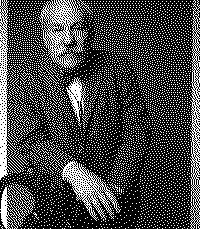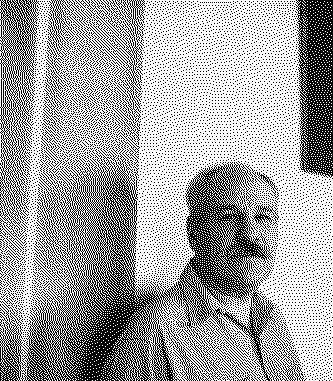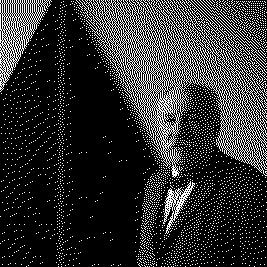Artists/Barnett Newman
Fast Facts
Pioneer of Color Field Painting
Barnett Newman was a leading figure in the Color Field painting movement, known for his large canvases filled with areas of solid color. His work focuses on the emotional and spiritual impact of color and form.
Zips as a Signature Motif
Newman is famous for his "zips," which are vertical lines that run the length of his canvases. These lines serve to divide and organize the space, creating a sense of structure and tension within his works.
Exploration of Abstract Expressionism
Although closely associated with Abstract Expressionism, Newman's work diverged from the gestural styles of his contemporaries like Jackson Pollock and Willem de Kooning. Instead, he emphasized simplicity and the sublime.
Philosophical and Theological Influences
Newman's art is deeply influenced by philosophical and theological ideas. He sought to evoke a sense of the sublime and the transcendent, aiming to create an experience that went beyond mere visual aesthetics.
Minimalist Approach with Profound Impact
Despite the apparent simplicity of his compositions, Newman's works carry a profound emotional and intellectual weight. His minimalistic approach challenges viewers to engage deeply with the experience of viewing his art.
Impact on Modern Art
Barnett Newman's innovative use of color and form has had a lasting impact on modern art. His emphasis on pure color and the emotional resonance of minimalism influenced subsequent generations of artists, including those involved in the Minimalist and Color Field movements.
Biography



Barnett Newman was an influential American artist born on January 29, 1905, in New York to Jewish immigrants from Russian Poland. Growing up in Manhattan and the Bronx, Newman started drawing during high school and continued his artistic education at the Art Students League while earning a philosophy degree from City College of New York.
He befriended notable figures like Adolph Gottlieb, which introduced him to the New York art scene. Despite early challenges, including a failed business and various odd jobs, Newman's passion for art persisted. His marriage to Annalee Greenhouse in 1936 was a significant personal milestone.
Newman's artistic journey was characterized by periods of exploration and rejection of his earlier works. He destroyed much of his early output, seeking a new artistic direction. This pursuit led to the invention of the "zip," a vertical stripe of color that became a hallmark of his work, symbolizing a radical departure from traditional compositions and emphasizing a direct, immersive experience of color and form.
Despite initial criticism and lack of recognition, Newman's work gradually gained acclaim, especially in the later years of his career. His approach to painting, which emphasized simplicity, color fields, and the philosophical underpinnings of art, positioned him as a key figure in the Abstract Expressionist movement and a precursor to Minimalism. Newman sought to create art that was free from historical constraints, focusing on universal experiences of existence and individuality. His notable works include "Onement I," which marked a turning point in his career, and the "Who's Afraid of Red, Yellow and Blue" series, among others.
Later in life, Newman expanded his artistic expression to include sculptures and lithographs, further cementing his legacy as a pioneering figure in modern art. He passed away from a heart attack on July 4, 1970, in New York City, but his influence endures, especially in the realms of Abstract Expressionism and Minimalism. His work is celebrated for its bold assertion of freedom and its profound impact on subsequent generations of artists.
Newman's legacy is preserved through the efforts of the Barnett Newman Foundation, established by his widow, Annalee, which continues to promote his work and influence in contemporary art. His art is held in prestigious collections worldwide, attesting to his enduring significance in the art world (Wikipedia) (Encyclopedia Britannica) (The Art Story) (The Museum of Modern Art).
Importance
Barnett Newman's significance in the art world is multifaceted, demonstrating his pioneering role in Abstract Expressionism, his development of the "zip" as a unique artistic device, and his deep philosophical engagement with art.
Pioneering Abstract Expressionism
Newman is celebrated for his innovative contributions to Abstract Expressionism, a movement that prioritized spontaneous, automatic, or subconscious creation. His works are existential in tone, aiming to communicate a sense of place and presence, thereby advancing the movement beyond its more expressive tendencies towards a deeper, more introspective negation of art as a purely man-made object (The Art Story) (TheCollector).
Invention of the "Zip"
Newman's introduction of the "zip," a vertical stripe of color that traverses the canvas, marked a significant departure in art. This device not only redefined the traditional opposition of figure and ground but also engaged the viewer in a direct, enveloping experience of color and form. His "zips" are seen as both separating and uniting the composition, a testament to his abstract and minimalist approach (The Art Story) (The Museum of Modern Art).
Spirituality and Artistic Expression
Newman's work transcends the formal qualities of Abstract Expressionism by incorporating elements of spirituality, drawing parallels with Byzantine, Renaissance, and Romantic art. His use of expansive color fields sought to induce a spiritual awe, moving beyond representation to direct sublime experience. This approach positioned his work as both a continuation and a radical departure from traditional religious art, aiming to access the sublime through the mind rather than through symbolic or narrative representation (TheCollector).
Influence on Minimalism and Color Field Painting
Despite being a key figure in Abstract Expressionism, Newman's minimalist approach and use of color fields also positioned him as a precursor to Minimalism and Color Field painting. His pared-down compositions, focusing on the relationship between color, space, and the viewer, inspired subsequent generations of artists to explore similar aesthetic and conceptual territories (The Museum of Modern Art).
Art as a Statement of Individuality and Connection
Newman viewed his art as a means to express the universal experience of being alive and individual, asserting freedom and challenging state capitalism and totalitarianism. His work encourages self-awareness and a sense of place, aiming to connect the viewer to the artist's own existential explorations (The Museum of Modern Art).
Legacy and Posthumous Recognition
Newman's contributions to art were not fully appreciated until later in his career and after his death. Today, he is recognized for his profound impact on modern and contemporary art, influencing not just painting but also sculpture and printmaking. His work continues to inspire artists and collectors alike, cementing his legacy as a fundamental figure in 20th-century art (The Art Story) (Encyclopedia Britannica).
Technique
Barnett Newman's technique, particularly noted for the creation of his signature "zips," represents a significant shift in the approach to painting within the abstract expressionist and color field movements.
Introduction of the "Zip"
Newman's revolutionary concept of the "zip" came to define his artistic voice. These are vertical bands that traverse the canvas, creating a sense of depth and interaction within a field of color. The "zip" not only served as a formal element but also carried philosophical implications, marking a departure from traditional figuration to explore the themes of presence, existence, and the sublime (The Museum of Modern Art) (Khan Academy).
Masking Tape for Precision
Newman employed masking tape to achieve the precise lines of his zips, a technique that allowed for sharp edges and uniform color application. This method contributed to the dynamic and complex nature of his compositions, emphasizing the purity and intensity of color (Khan Academy).
Spare Compositions and Color Fields
Newman's work is characterized by spare compositions that foreground vast expanses of color. By reducing visual elements to a minimum, he focused on the emotional and existential impact of color and form. His paintings often feature solid backgrounds interrupted by zips, engaging viewers in a direct and enveloping color experience (The Museum of Modern Art).
Spirituality and Abstract Expression
Newman saw his paintings as vehicles for spiritual and existential inquiry. By simplifying form to its most basic elements, he aimed to transcend traditional artistic representation and access a more profound spiritual experience. This intention aligns his work with the aims of Byzantine, Renaissance, and Romantic art, despite the vastly different means of expression (TheCollector).
Engagement with the Sublime
Newman was deeply concerned with the concept of the sublime, seeking to induce a sense of awe and transcendence through his art. This pursuit led him to strip away any representational elements, focusing instead on the purity of color and form to evoke a direct spiritual encounter (TheCollector).
Reflection on Existential Conditions
Through the reduction of imagery, Newman aimed to confront the viewer with their own sense of self and place in the world. His approach to painting as a meditative process reflects a deep engagement with the viewer's existential condition, inviting a contemplation of individuality and connection (TheCollector).











